Workforce Policy

August 2023 Jobs Day Analysis
The Joint Center analyzes the employment numbers from the Bureau of Labor Statistics and showcases how the numbers impact Black workers. Our August Jobs Day analysis is below.
In August, the Black unemployment rate declined slightly to 5.3 percent, an encouraging sign for the economy as inflation rose slightly to 3.2 percent in July.
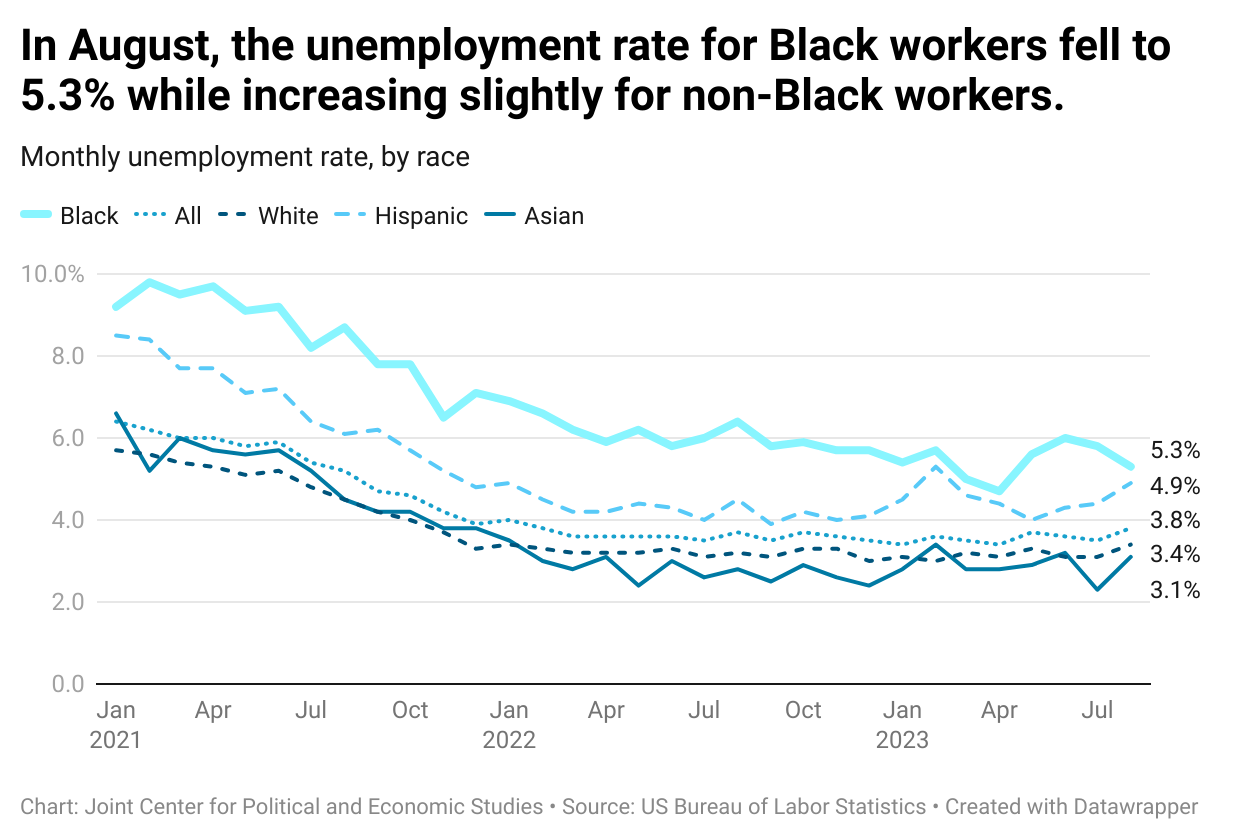
The unemployment rate for both Black women and men decreased in August. 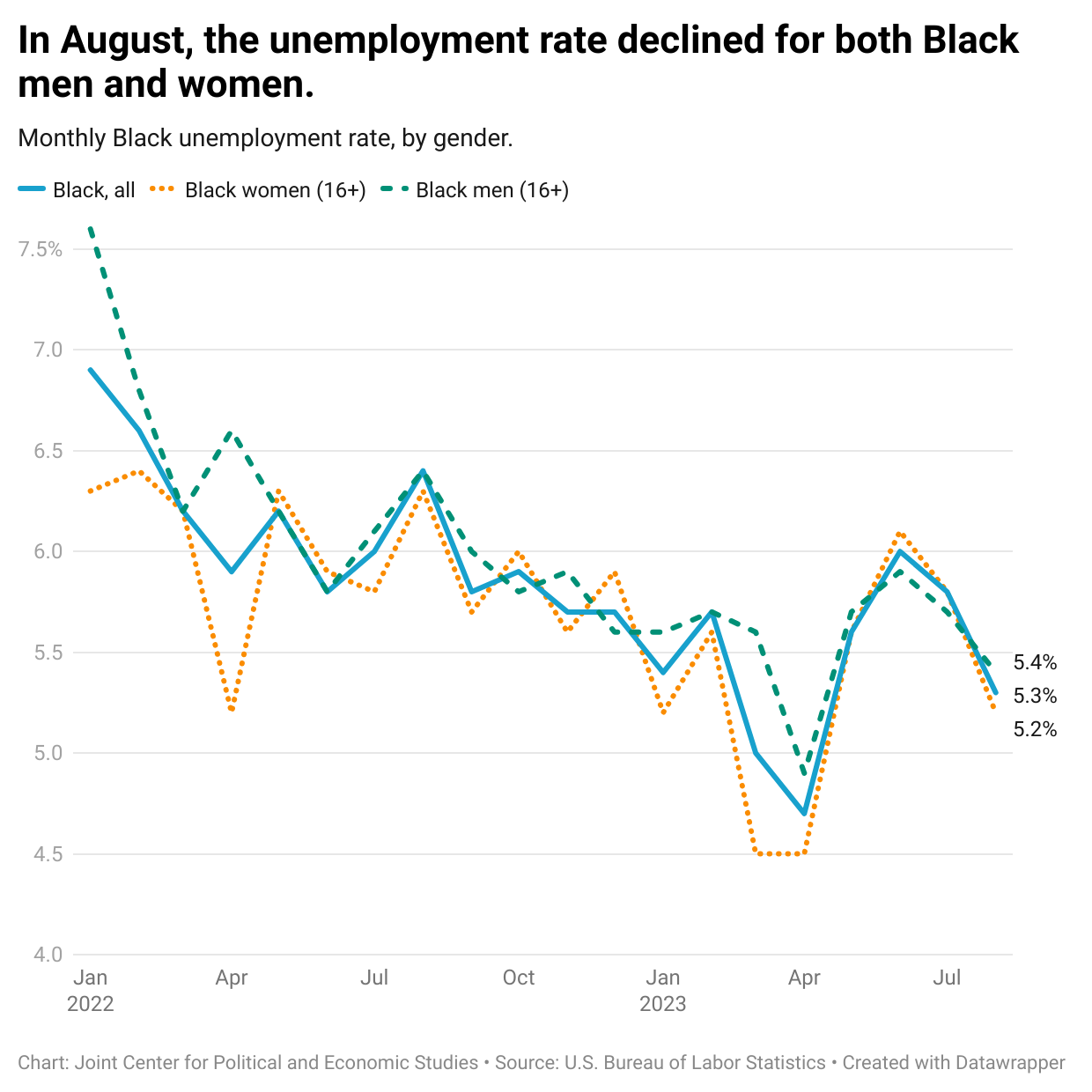
The total number of employed Black workers increased by 100,000 in August, a second straight month of job increases.
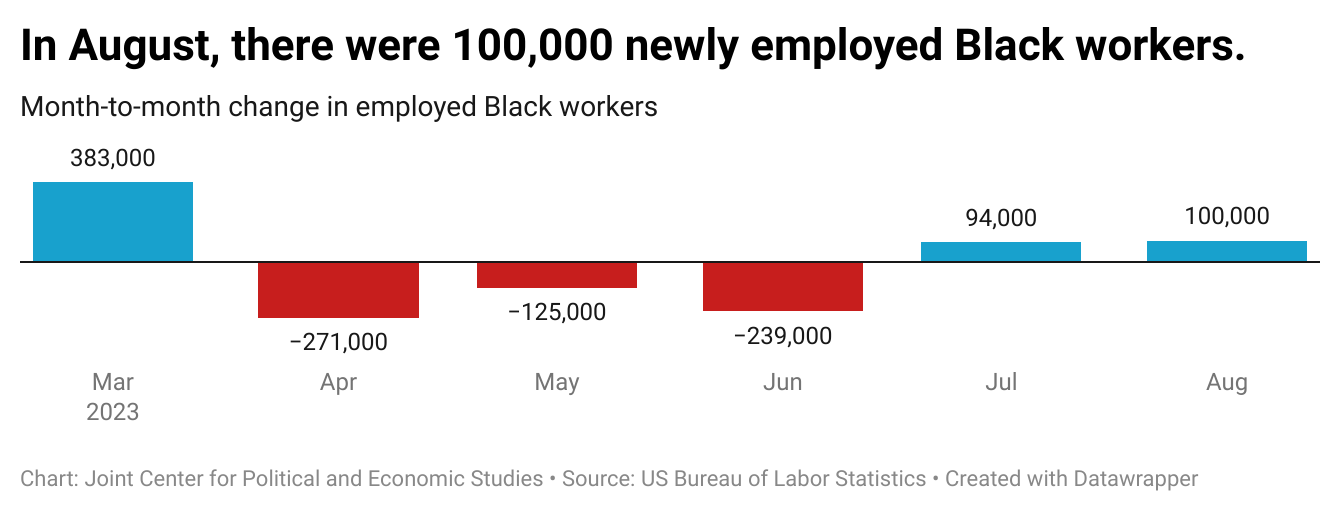
Despite declining unemployment rates, 67 percent of Black households reported difficulty paying for household expenses in the last seven days, compared with 58.7 percent of white households according to the most recently available U.S. Census Bureau Household Pulse Survey.
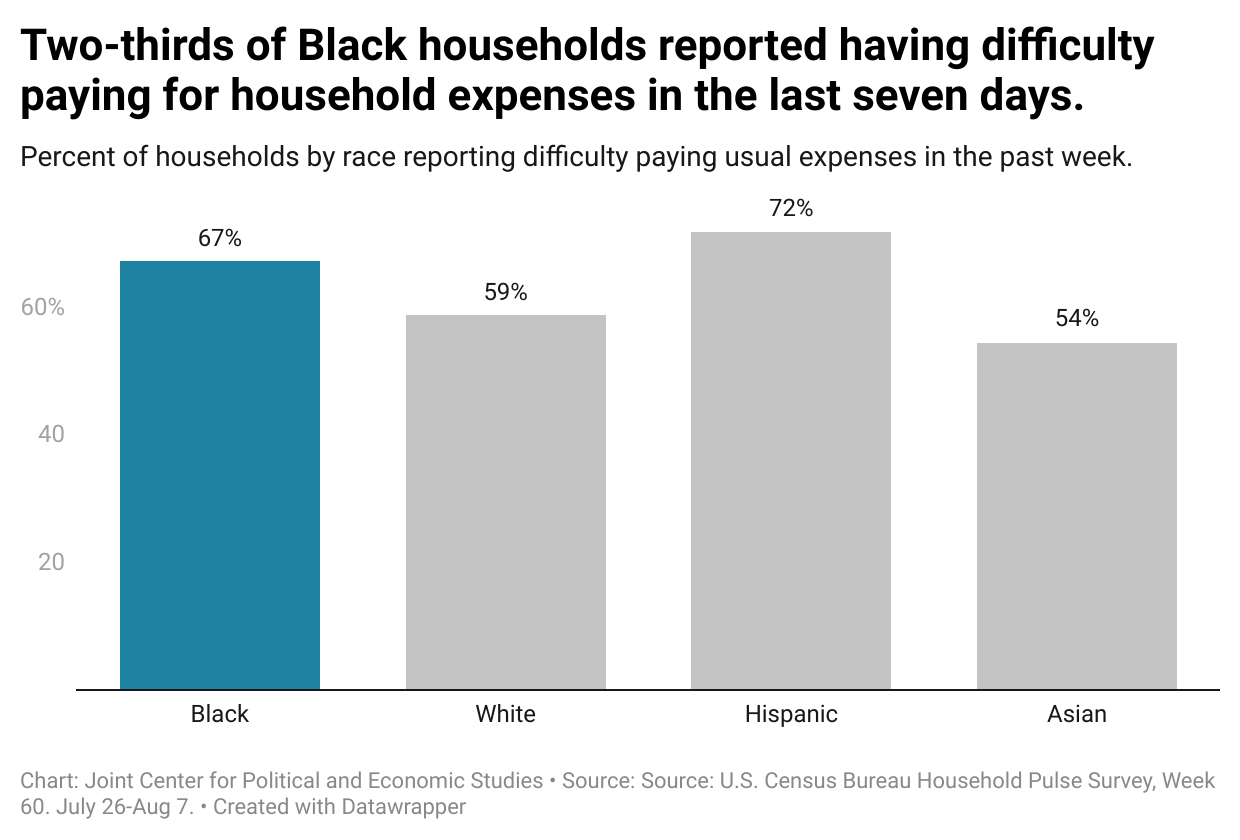
Young Black workers saw a decrease in their unemployment rate to 12.1 percent in August from 18 percent in July. This is the first decrease in three months, as young Black worker labor force participation remains steady.
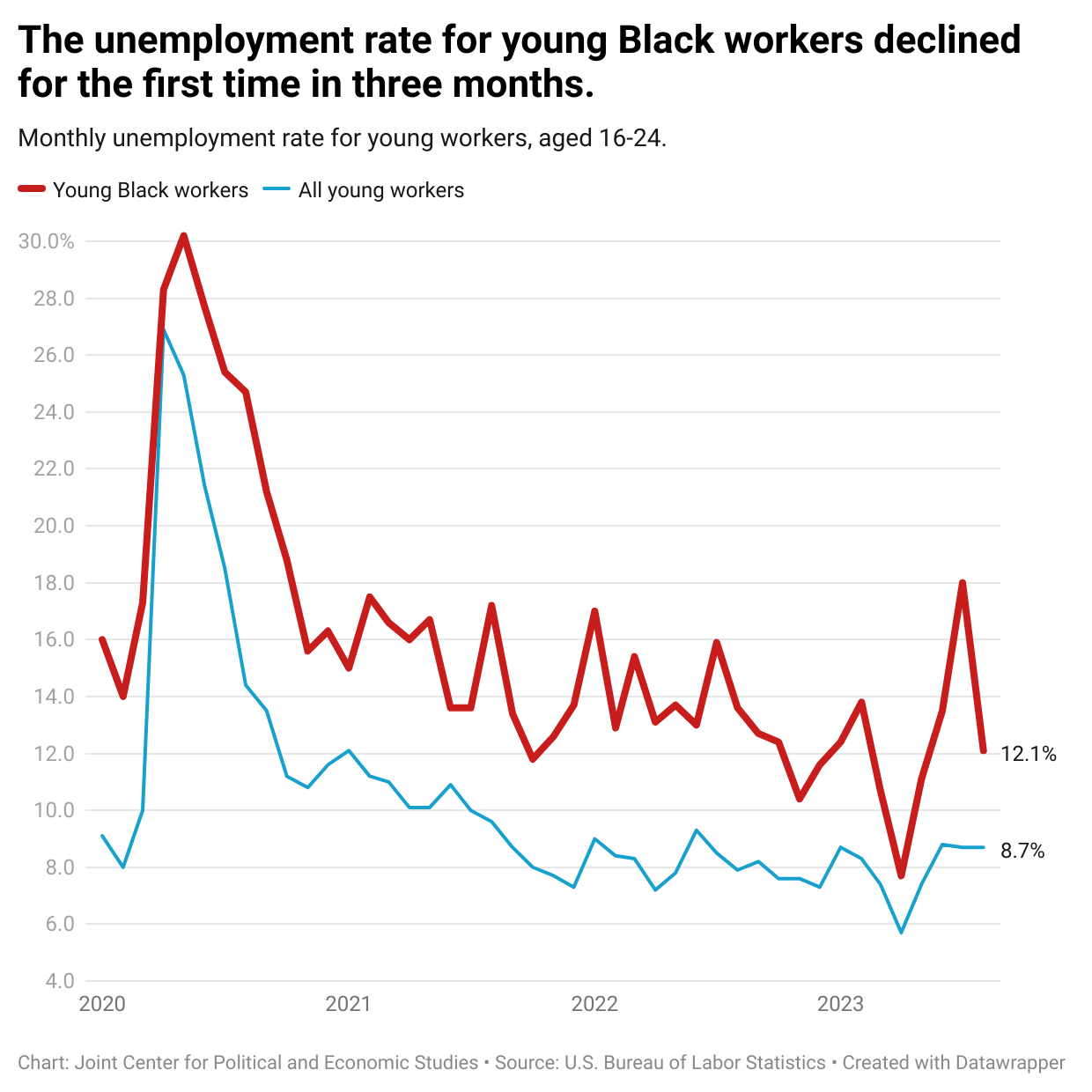
Food insufficiency continues to affect families, as 18.3 percent of Black households report not having enough to eat compared to 8.4 percent of white families.

The cost of school lunches is affecting Black families with children who do not receive free lunch at school. 27.6 percent report finding it difficult to pay for household expenses because they have to pay for their children to eat at school, compared with 18.5 percent of white families.
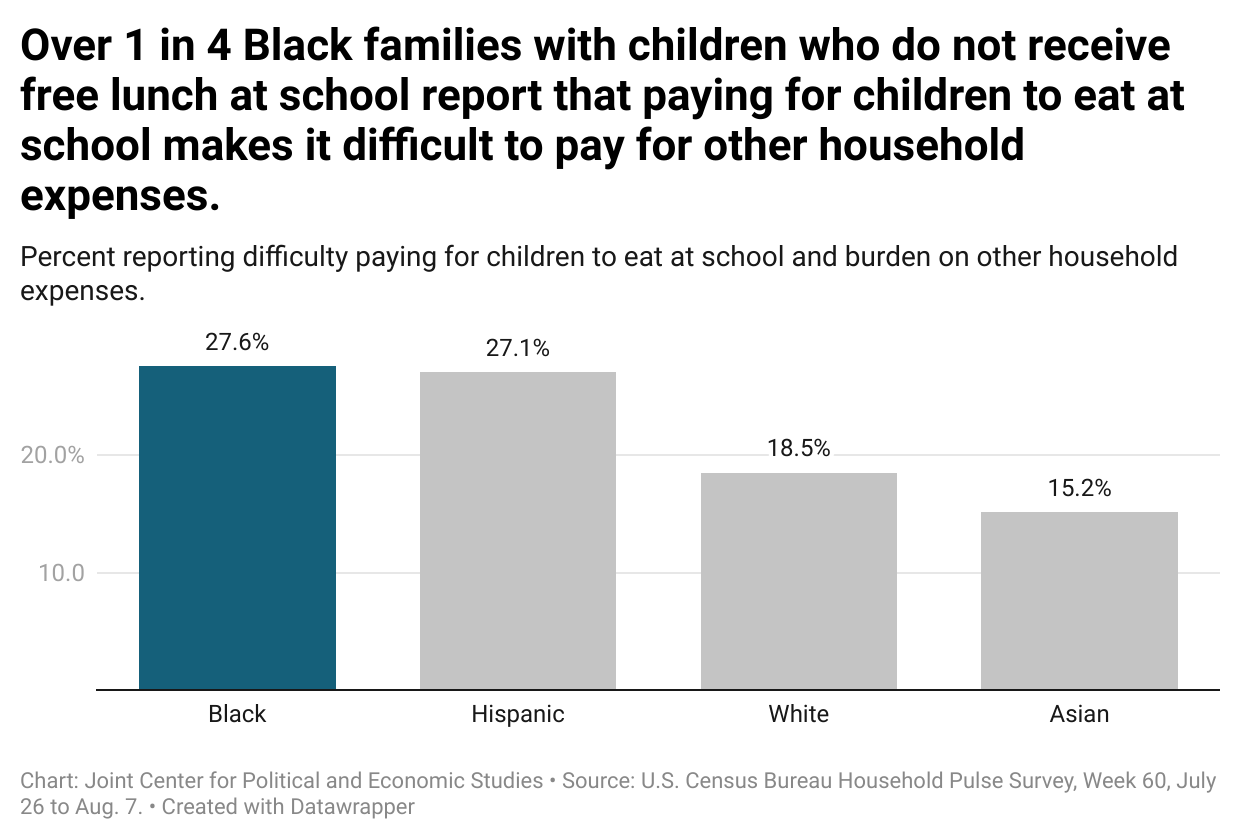
As the country celebrates the importance of unions this upcoming Labor Day, union membership benefits are evident in Black workers’ wages. Last year, Black men and women union members earned $196 and $157, respectively, more in median weekly wages than non-union members.

Follow the Joint Center on X for monthly Jobs Day updates.




April 2024 Jobs Day Analysis